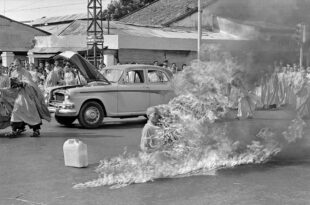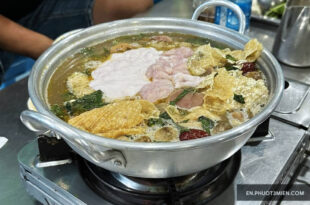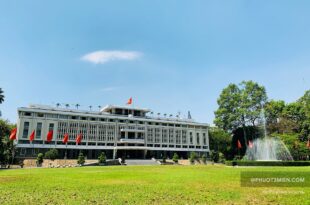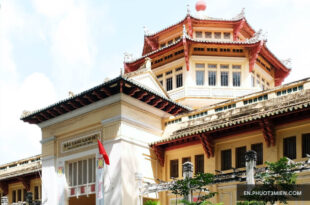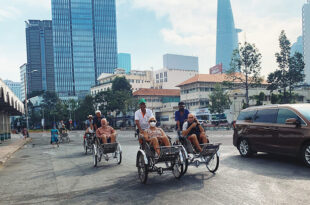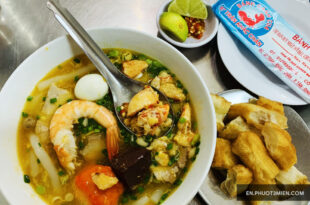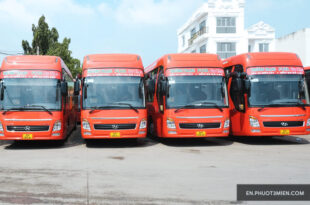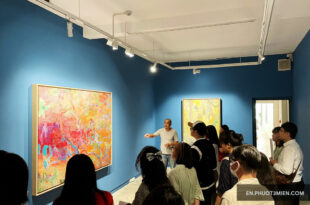Getting Around Saigon and its Wonderful Districts
There are several ways to navigate the maze of Saigon. You can only truly know Vietnam, and Saigon in particular, once you zigzag among the crowded city streets on a motorbike.
There are several ways to navigate the maze of Saigon. You can only truly know Vietnam, and Saigon in particular, once you zigzag across the crowded city streets on a motorbike. It is not by chance that there are millions of scooters and a tangled chorus of beeping within the city that never seems to sleep. The city is not terribly large, you can get from one point to another easily with a bike, traffic is definitely the enemy of cars, and trust me you will only like the bus if you have a daily route (such as traveling to work). Therefore, in this article, I will briefly introduce to you several highly recommended means of transport.
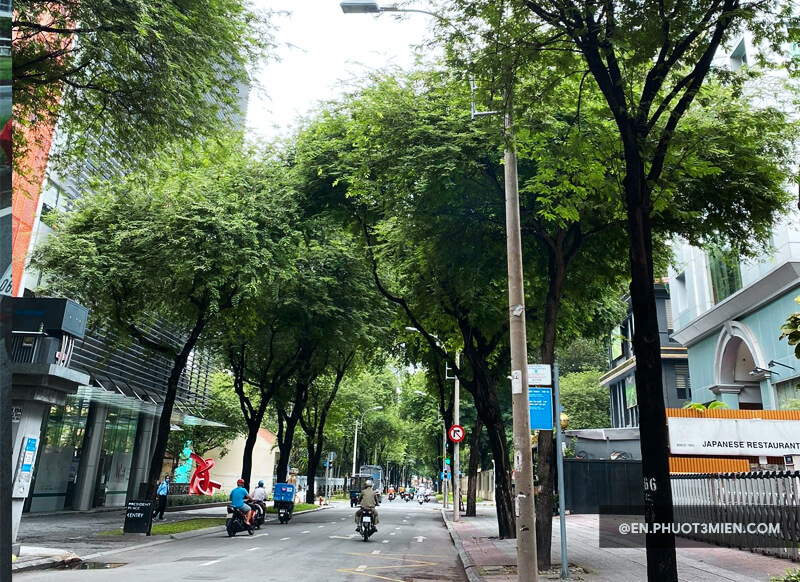
I am going to focus more on traveling around via motorbike taxi, as well as places you can explore by yourself on a bike. I divided the article by referencing the different districts of Saigon, so make sure you take your time and map out a good route for yourself to explore. Here we go!
Get behind a motorbike taxi
The motorbike taxi (usually known as “Xe Om”) appeared in Saigon no earlier than 1965. Back then, it was even a high-end mode of transportation, mostly to serve the Westerners living in town!
During the Vietnam War, a new Vietnamese working class appeared and they mostly worked for the Americans. Their salary was pretty good compared to the average Vietnamese salary, allowing them to afford private motorbikes. A man, whose name is unknown – Mr. X, worked for a US company located in the heart of Saigon. He bought himself a Lambretta to travel to work. All of a sudden, his company cut the workforce and he lost his job. After a long period of feeling distressed as a result of the incident, Mr. X calmed himself and started seeking ways to earn a living and support his family. During which, he would drop in on his old office once in a while, maintaining certain friendships.
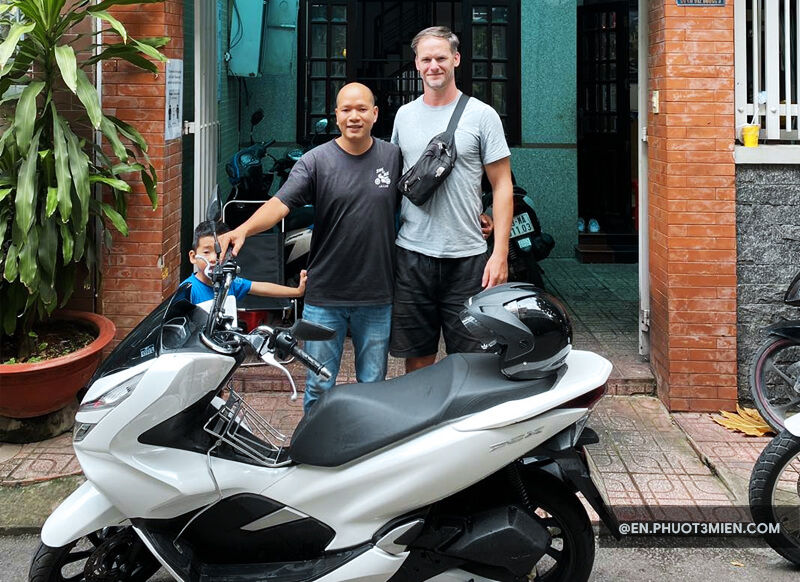
One evening, an American officer asked for his help to take him to a snack-bar quite far away. Mr. X was pleased to help. During the trip, the American man commented that it was really more comfortable for such Westerners like him to sit on the back of the Lambretta than on that of other bikes made by the French or Germans in Saigon then. Upon reaching the destination, the American man offered to tip Mr. X a bit, and wished to have similar city trips next time on the same bike. Since then, Mr. X realized that his Lambretta could earn even more than he could at the office! Other men started to pick up on this lucrative job. They founded the very first Lambretta Xe Om team in Saigon, providing the service mostly to the American officers at the time.
Today, Xe Om is one of the cheapest means of transport in the city. You can still see traditional Xe Om men parked along the street, mostly on the street corners or beside a bus stop. They are generally kind men and many of them work hard to earn an honest living. However, for the best experience traveling around this metropolis, especially if you are not familiar with the town, give it a second thought before you choose their service due to the language barrier. I recommend other better alternatives:
Grab Bike
I highly recommend Grab Bike which is more transparent in terms of price and route. It’s also a highly popular mode of transportation among locals. If you want to taste Saigon on the back of a scooter, now you don’t have to worry about the language barrier
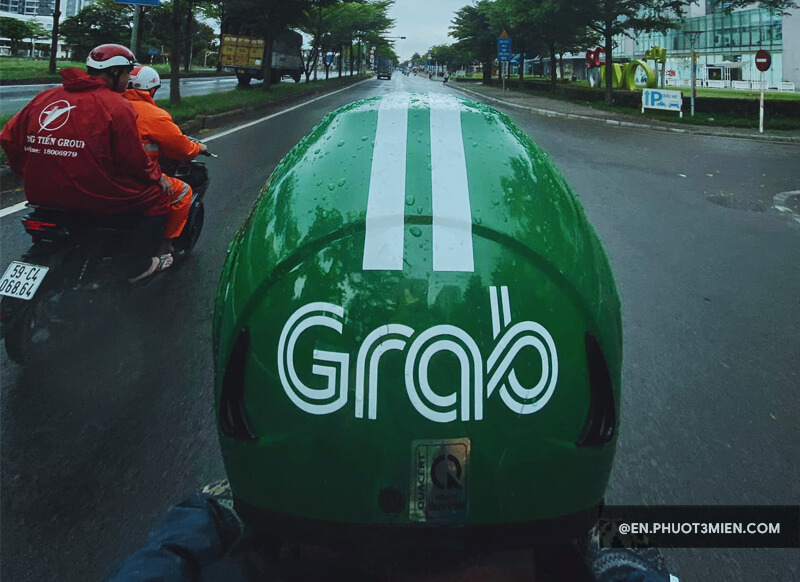
Book your destination on the app, and the riders will take you to your destination in the blink of an eye. Your Grab rider will easily recognize the green coat and helmet and the white “Grab” logo.
Other reputable modes of transport
Vinasun and Mai Linh Taxi
The two most trusted taxi brands in the city are Vinasun and Mai Linh (see their photos above to recognize them). For relatively similar prices, such cabs are all around the city and it’s more than easy to grab one on the street. However, during peak hours (6:30 AM – 9:00 AM and 5:00 PM – 6:30 PM),
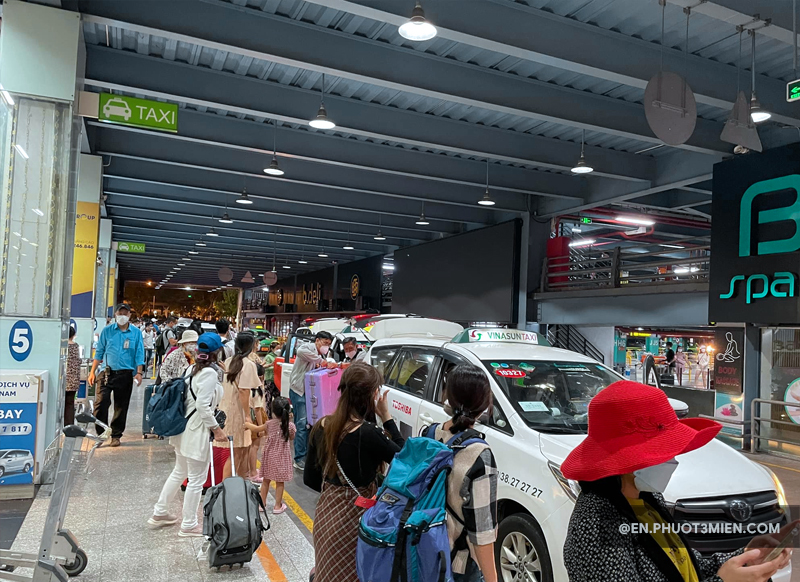
I recommend giving them a call beforehand:
- Vinasun: 08 38 27 27 27
- Mai Linh: 08 38 38 38 38
Grab Car
For Grab car, you have two options: Grab Taxi (which is a contracted cab between Grab Platform and a taxi brand, so your cab will have a taxi label on it), and Grab Car (which is a contract between Grab and freelance drivers). If you want to book a high-end car, choose Grab Car Plus.
Taking a bus
Navigating Ho Chi Minh City just got way easier. Check out https://busmap.vn and download the app on your phone. It provides you an English version of the route of each bus line in town, with bus stop details, and earliest and latest departures.
KKday is a travel APP platform offering over 20,000+ online products such as: tickets for amusement parks, outdoor services, sightseeing tours, culinary experiences, transportation, accommodation, courses, and local culture... Currently, there is a summer promotion with discounts up to 50% and coupons up to 250K VND off.

Attractive discount codes such as: 100K VND off for new accounts, 150K VND off summer promotion, 250K VND off, KKday birthday celebration...
It’s easy to take a bus in Saigon, you only need to stand at a bus stop and wave at the bus as it approaches. However, there are some things you should keep in mind to ensure a safe and sound trip:
- Make it quick when you get on or off a bus. Since the roads are always busy with vehicles, it’s hard for the driver to pause at the stop for long.
- Some buses require you to pay and place your payment in the box next to the driver without any cashier, so make sure you have some small notes in your pocket. The average bus fare is 5,000 VND.
- You should have a piece of paper to show the driver where you’re getting off, since there are not many buses with English directions.
- The easiest bus route is no. 109, which takes you from SGN airport to Ben Thanh market. It costs 20,000 VND and has guides in English.
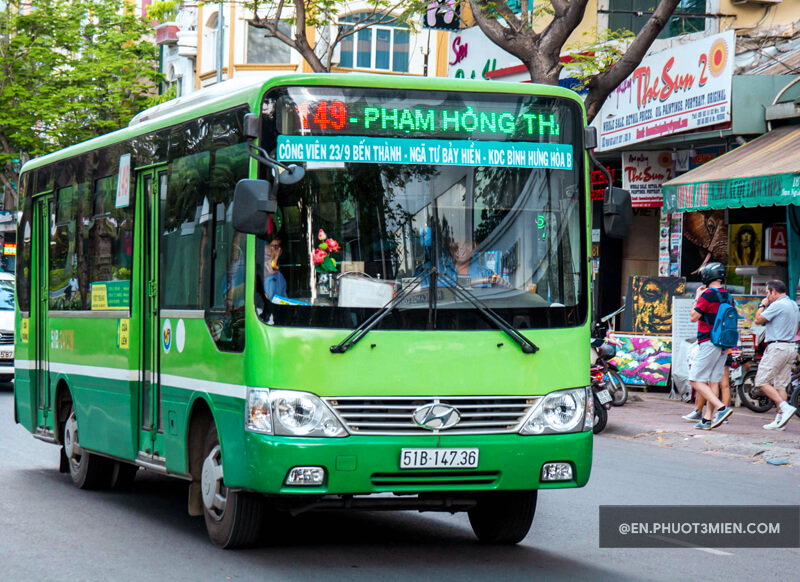
Renting a bike
It is common to rent a bike yourself when traveling in Vietnam. Make sure you are in control when riding in the crazy chaotic yet oddly controlled traffic of Saigon. Your accommodation host will surely know good bike rental shops nearby. Otherwise, you could look at our article, Saigon Bike, to see what you should pay.
Link here: https://www.saigon-bikes.com/
Riding through District 01 to District 03
Experience the Café Town
The best place to experience the world-famous Vietnamese coffee is in the heart of District 01. It is not by chance that there are hundreds of cafes around this area. Not to mention that drinking coffee is a daily routine of the Saigonese, so the center of District 1 attracts coffee lovers with a combination of nostalgia-inspired coffee houses and luxury cafes. On Dong Khoi street – the fanciest street of Saigon – there is a coffee shop called Saigon Coffee Roastery, of which the owner is a well-known Vietnamese barista trainer – Phap Vo. A cozy space and specialty coffee are what you can expect in this shop. And you know what, us Vietnamese are known for our hospitality, so if you are curious, you can ask the baristas questions on coffee, and they will happily explain.
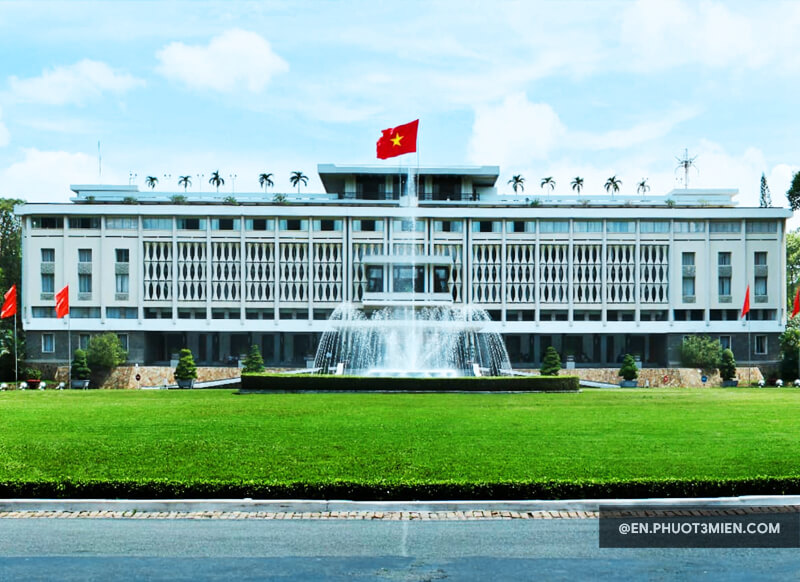
Two other specialty coffee shops in this luxurious area are Workshop Coffee and Shin Coffee, respectively located on Ngo Duc Ke street and Nguyen Thiep street. While the former provides you with a large room (with a separate meeting room on requirement), and artistic atmosphere, the latter welcomes you with a warm and small space and fancy cups on which the coffee is served. Both places are relaxing and you can learn more about coffee in Vietnam. I prefer Workshop Coffee due to the beautiful view it provides, from which I can settle into an amazing cup of coffee while contemplating the busy life of Saigon down below my feet.
Watch traffic with a cup of coffee in hand.
A few steps away from these two coffee houses, right on Nguyen Hue Boulevard (also known as the Pedestrian Street), there is another interesting building filled with coffee shops and tea houses – the 42 Nguyen Hue Building. This is more commonly referred to as the Café Apartment. In this place, you are not provided with specialty coffees or teas, but you are provided with beautifully retro café spaces, artistic decoration, and a unique view of the boulevard below.
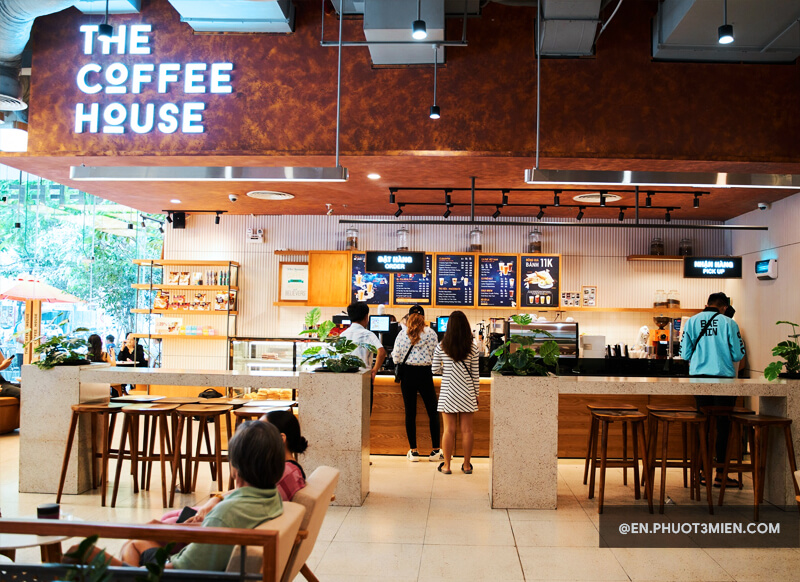
Cafes constructed in the bones of old buildings is a trend of the city. Imagine walking the old mossy steps of the staircase, crossing several quiet wooden doors, and finally reaching an open door. A cozy room, warm music, the personal style of the owner, and a good drink are just on the other side. However, soon, these coffee shops will be swept away due to business and safety legislation, so hurry there soon before these cafes are demolished.
If you pay close attention, you will notice that the people visiting Workshop Coffee are usually interested in art, or those who particularly love coffee. The cafes in the Nguyen Hue building attract mostly students or friends looking to snap some Instagram pictures. Popular cafes like Phuc Long, The Coffee House, Highland, Trung Nguyen, Ciao Cafe are for the white- collar workers gathering for a morning talk. 24/24 cafes around Pasteur street – Han Thuyen corner are filled with familiar friends, freelancers running for deadlines, and college students seeking a place to finish their homework.
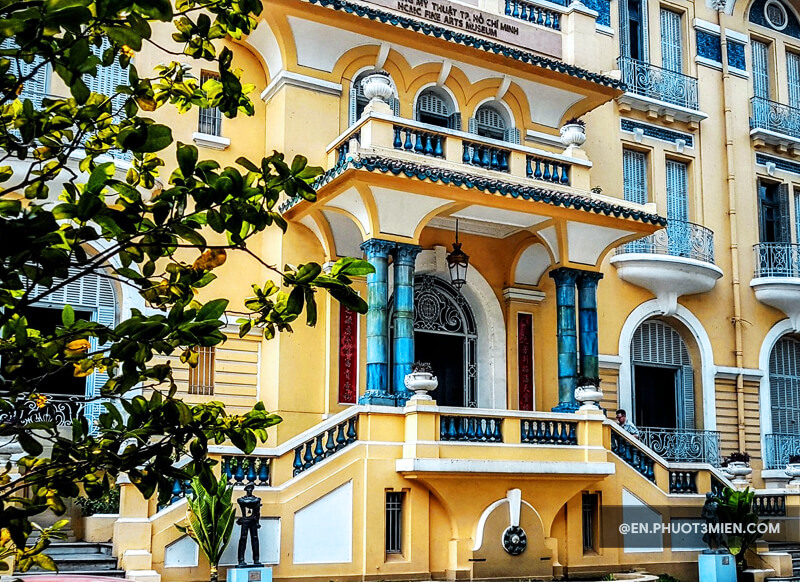
Enjoy the Backpacking Area
Since the early 1990s, Bui Vien street has been known as the town of the backpacker. Ever since, this part of the city sees travelers and expats from around the world, bringing into the small town a rich culinary culture. You can easily spot an Indian restaurant such as Baba’s Kitchen, or have pizza as if you’re in Rome. There’s Starbucks from the USA, and a plethora of local Vietnamese restaurants and stalls serving all kinds of dishes, from pho, banh xeo (Vietnamese savory pancake), banh mi (baguette sandwich), banh cuon (steamed rice rolls), and com tam (broken rice plate), etc.
Bars and pubs line the streets of this sleepless town, and more cafes are open 24 hours a day. Since the middle of 2017, this area prioritizes walkers rather than vehicles. If you wish to try egg coffee in town, look for Goc Ha Noi for Vietnamese traditional egg coffee, or The Note Café for a Westernized egg latte!
The backside of this area is seedy; people can easily buy drugs (surely illegally), and it is normal to find used needles on the road so be careful here. Life in this town is not economically equal, as deep inside these narrow and dark alleys hidden behind the glorious facade of the houses, there are people living their daily life in poverty.
The Art and Music Streets: Nguyen Thien Thuat – Tran Phu (District 03 – 05)
Temporarily leaving the busy streets of District 01, drive to Cong Hoa Roundabout. This roundabout is in the middle of six streets, one leading to District 01, one to District 3, two to District 05, and two to District 10. Five of these streets are covered with the forgiving shadow of aged trees, proving to passengers that the streets have been around for decades. Around this area, you can easily spot the school complex located on Nguyen Van Cu street, including Le Hong Phong High School for the Gifted (built over a hundred years ago and is one of the national top high schools), Thuc Hanh Saigon High School, Ho Chi Minh City University Of Science, and Ho Chi Minh City Pedagogical University.
Tran Phu street is a small one-way street among the six streets mentioned above. On this street, you will find along both sides an amazing density of art galleries. The paintings in this area are basically pop art. Prices are fairly affordable. Drink a rustic cup of Ca Phe Sua Da on a warm afternoon right on the sidewalk, you will get a feel for the art in demand in this city.
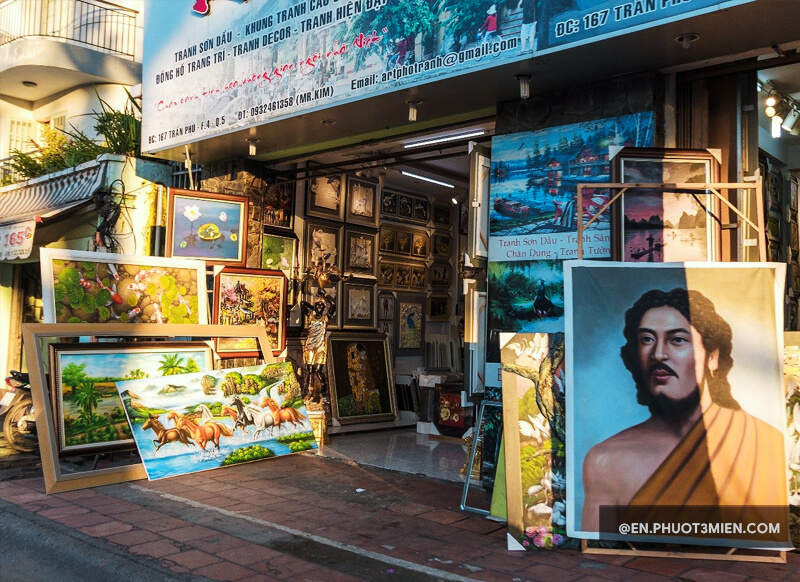
Follow the one-way traffic on Tran Phu street to Cong Hoa roundabout, turn left onto Ly Thai To. Then turn right onto the first alley, you will soon find yourself on a small road full of musical instrument stores. Say guitar town, violin town, or call it by its name – Nguyen Thien Thuat street, and any music player in the city will agree that this is where you can find quality stringed instruments.
Located right in the heart of Saigon, this street (roughly 500 meters long) is the home of more than 30 shops, mostly small-scale and selling home-made guitars. If you are a fan of the violin, don’t forget to drop by Tien’s Violin store – a family-run store owned by the famous Vietnamese violinist Tien Phan. Many of the violins are imported from Europe, many others are made in his home and sold to other countries. Now you know where to go when you snap your guitar strings!
Read more: Shopping in Saigon – The Best Local Markets & Spots To Find Great Deals
District 04 – Harbor Town
For decades, District 04 has been referred to as the town of gangsters, for reasons that can be traced back to its many harbors. Streets like Ton That Thuyet, Ton Dan, and even the beautiful riverside today was once a place riddled with fights. Don’t worry, it’s no longer the same.
Life in District 04 is transforming to one of the most attractive places to live in the city. Just a bridge away from the commercial area of District 01, with high-end apartment buildings emerging (Icon 56, The River Gate, etc.), this district is calling you with smell of delicious street food.
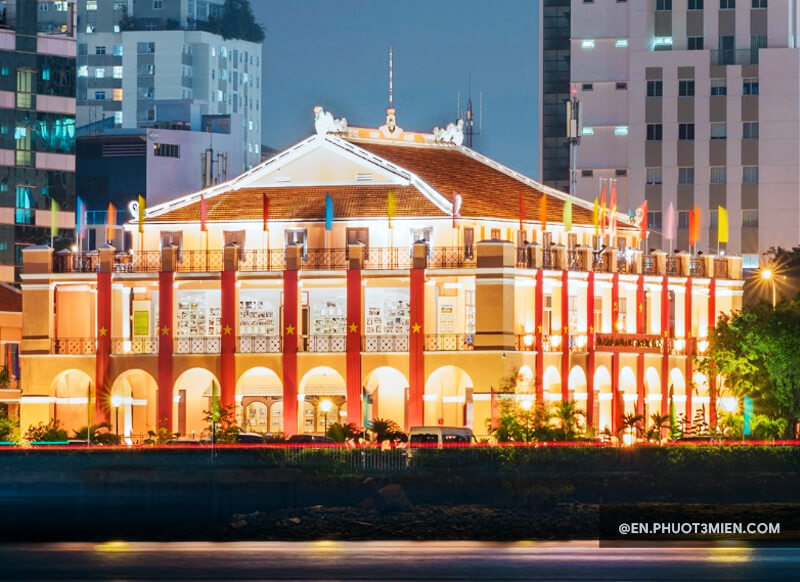
A symbol of District 4 is the Nha Rong Harbor (known today as Ho Chi Minh Museum). President Ho Chi Minh started his journey abroad in 1911 from this exact point, embracing a huge ambition to release the Vietnamese from colonialism. Renamed to Ho Chi Minh Museum in 1995, Nha Rong Harbor has many antiquities that tell the story of Uncle Ho and his legendary life.
MORE INFORMATIon
- Entrance fee: 25.000vnd/person
- Opening hours: 07:30 – 11 & 2:30 – 4
With a local pal, make a brief trip to Ben Do Market (officially known as Long Kieng Market) before the afternoon arrives. I ended up here once by accident, after seven years of living in Saigon. Located on the harbor of Kenh Te canal, the market spans roughly 500 meters along the old, sunny Ton That Thuyet street, starting from the corner of Nguyen Khoai street to Kenh Te bridge. At first sight, there is nothing really special about it, you’ll first notice the abundance of fresh fruit. However, I got really excited when I noticed a small boat loading bunches of dragon fruit, hiding behind a floating house that was falling apart.
Kenh Te canal usually attracts boats bringing tons of fresh fruit from other districts into the city. They anchor themselves in this area of District 04, or the harbor under Tan Thuan Bridge in District 07. What you find here is more than just fruit – a way of life of the Saigonese that has been established for decades, that has not yet faded away.
District 05 – 11, The China Town
Since 1778, the Chinese Vietnamese have been relocating to the West of Saigon, building up a big community. In 1930, this region was merged into Saigon, forming the region of Saigon – Cho Lon. Today, Cho Lon refers to the Western part of District 05, District 10-11, and District 06. You can find many wholesale markets selling trinkets and clothing for attractive prices. Many commodities in markets around Saigon are distributed from these wholesale markets. Most people there speak Cantonese and Vietnamese, however you can still find a few vendors that speak a couple words of English. Some of the food found in Chinatown is to die for, and you can find an awesome list of dishes to try in this blog. Don’t miss out. Take your time to ride out here on that bike you just rented.
Once you are in the town, visit Thien Hau Temple and Quan Am Pagoda. These two most well-known temples reveal more about the religious life of the Chinese Vietnamese community.
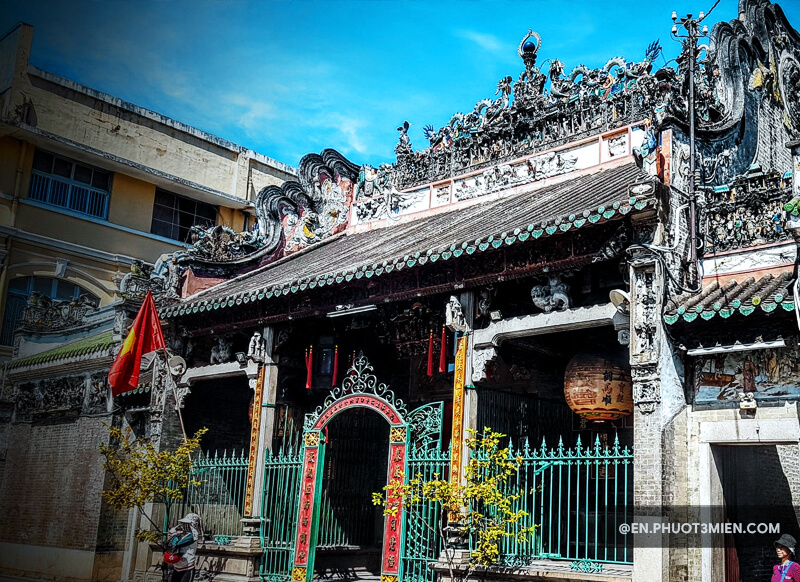
On your way out, do not forget to drop by the Museum of Traditional Vietnamese Medicine. Housed in a unique traditional building at 41 Hoang Du Khuong, District 10, the museum features a collection of thousands of traditional remedies, some dating back to the Stone Age. Besides, a large collection of books and documents is also in place, providing a more in-depth look at the world of traditional Vietnamese medicine, which was significantly impacted by Chinese philosophy.
The old Binh Thanh – Ba Chieu area
The streets in this area recall a nostalgic emotion but that does not mean the area is undeveloped. In contrast, Ba Chieu area has emerged into a modernized and commercial town. However, clues of the old Saigon are still around, you can still come across a house sleeping behind moss, a huge aged tree gently stretching its shadows over several-floored houses, a small shrine, or a quiet temple. There, people live kindly and humbly.
Families living in Saigon since the very first years of the 20th century still recall the area as one of the most memorable parts of Saigon – Gia Dinh. There, the Lang Ong Temple, a tomb of a Vietnamese general named Le Van Duyet (1763 – 1832), stands solemnly as if recalling a past of integrity and loyalty. In 1918, at this temple, the excellent Vietnamese activist Nguyen An Ninh, before pursuing his higher education in France, made the vow to overcome any temptations abroad and return to release his hometown from colonialism. The vow came true, and Nguyen An Ninh became one of the most well-known revolutionary activists of the time.
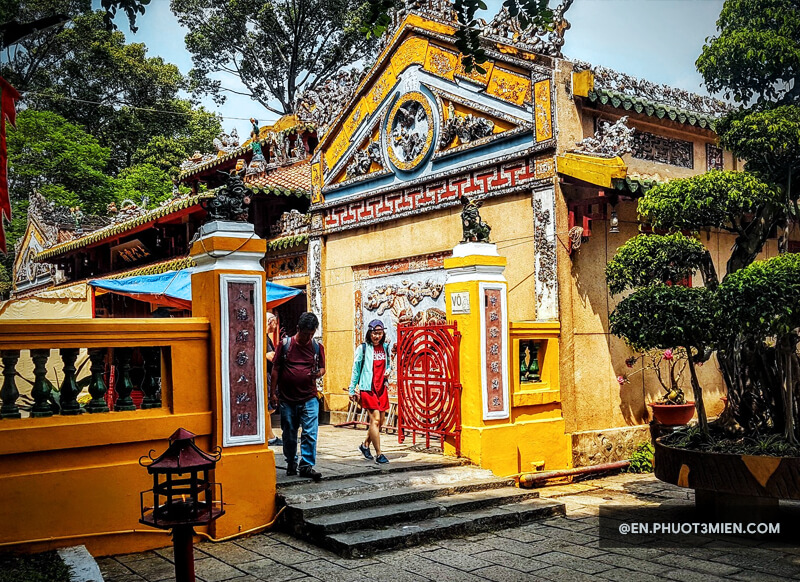
My uncle’s family moved into this area in 2011, settling down in Bach Dang street – now it is full of high houses, furniture stores in all sizes exposed under direct sunlight, and old trees being replaced by new ones. What is most interesting about Ba Chieu today, to me as a Saigonese, is its market with fresh fruit, its School of Fine Arts which has been standing there for a century, Lang Ong Temple solemnly observing the life of new generations, and the inexplicable feeling I get when I walk those streets with its aged trees still preserved, saving the beautifully fresh moments of people’s daily life in my camera, and wondering what will take place in the next few years.
If you wish to know more of the city, head to District 07 – Phu My Hung town (mostly populated by the Korean expats), or District 02 – Thao Dien/Saigon Pearl area (preferred by Western expats). The Saigonese do not call these ‘Saigon’. They are parts of the new Ho Chi Minh City with all the modern infrastructure. They are surely worth a visit, especially if you are looking for a business class experience. However, let’s wrap up here with the old and the new Saigon. I hope with this article, you have created for yourself a map of places to drive through and spend some time in. Be safe and be mindful of the road rules!
Read more: 5 Must-See Places in Saigon Most Travelers Miss
If you enjoyed reading this article and would like some more fun info about what to see, do, and eat (and a bunch of interesting cafes!) in Vietnam, follow us at Travel Blog Phuot3mien!
